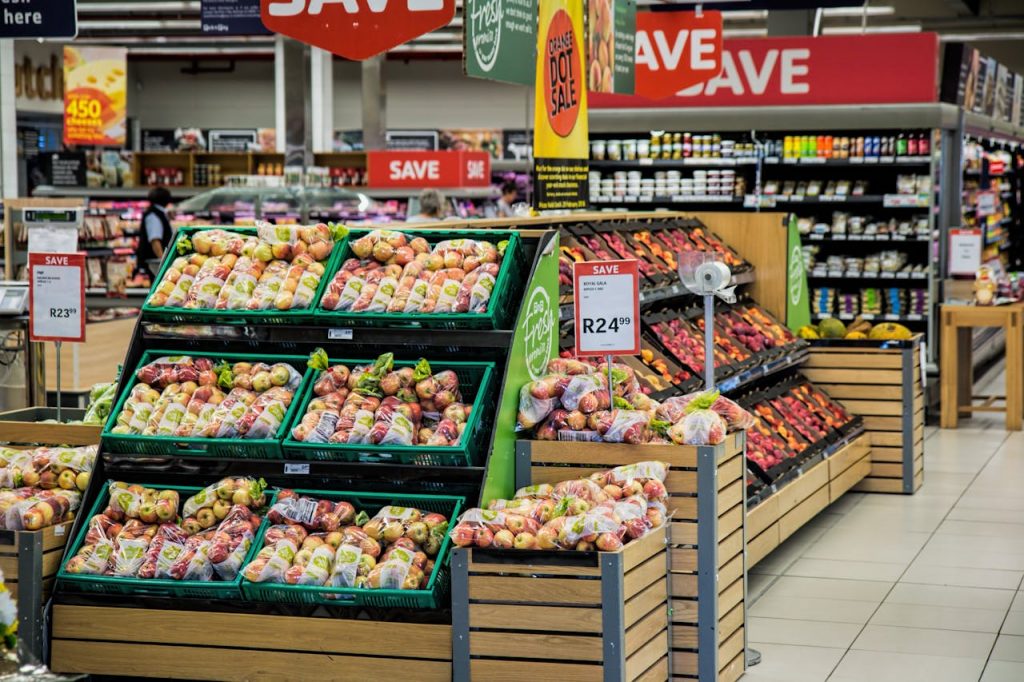
Grocery shopping can feel like a major hit to your wallet, especially if you’re feeding a family. But don’t worry! There are plenty of ways to trim down that bill without sacrificing what you need. Check out these 11 tips to make your next grocery run more budget-friendly.
1. Use a Grocery Rewards Card
Want to get more out of every dollar you spend at the grocery store? Use a grocery rewards card. For example, the Blue Cash Preferred® Card from American Express offers a whopping 6% cash back at U.S. supermarkets (up to $6,000 per year, then 1%). Even after the $95 annual fee, the savings can really add up. Not into annual fees? The Blue Cash Everyday® Card from American Express gives you 3% back at supermarkets with no annual fee. So, why not earn while you shop?
2. Join the Store’s Loyalty Program
Most grocery stores have loyalty programs, and they’re usually free to join. These programs often give you access to member-only discounts that automatically apply at checkout. No coupon clipping required—just sign up and start saving.
3. Clip Coupons
Speaking of coupons, don’t skip them! Whether you’re flipping through the weekly mailer or browsing digital coupons on your grocery store’s app, those little discounts can add up. Load digital coupons directly onto your loyalty card and watch the savings roll in at checkout.
4. Consider a Wholesale Club Membership
If you’ve got a big family or just love buying in bulk, a wholesale club like Costco might be a smart move. Just remember, bulk buying requires more upfront cash, and memberships start at $60. But with the right strategy, you can score some major savings—especially if you use a card like the Costco Anywhere Visa® Card by Citi for an extra cash back boost.
5. Stick to Your Shopping List
Impulse buys can quickly add up, so make a list before you shop and stick to it. It helps to shop on a full stomach and, if possible, leave the kids at home. Fewer distractions mean fewer unnecessary items in your cart.
6. Shop the Sales
Always keep an eye out for sales. Supermarkets run promotions all the time, so grab those deals when you can—especially on pricier items. Sale items are often displayed at the store’s entrance or at the ends of aisles, making them easy to spot.
7. Skip the Pre-Packaged Items
Sure, pre-cut veggies or shredded cheese are convenient, but they usually come with a markup. Save money by buying whole items and doing the prep work yourself. It might take a little extra time, but your wallet will thank you.
8. Compare Prices Across Stores
If you live near multiple grocery stores, take the time to compare prices. Some stores may have better deals on certain items, and splitting your shopping between a couple of stores could save you more than you think. Also, consider switching to more budget-friendly stores like Walmart, Aldi, or Trader Joe’s.
9. Opt for Generic Brands
Brand names aren’t everything. In fact, generic or store brands are often just as good—and they’re cheaper. Look beyond the eye-level shelves and grab those off-brand items to save a few bucks.
10. Bring Your Own Bags
Some stores, like Target and Whole Foods, offer a small discount for bringing your own bags—typically around 10 cents per bag. It’s not much, but it’s better than nothing and it’s good for the environment too.
11. Use Rebate Apps
Rebate apps like Ibotta and Rakuten can give you cash back on your grocery purchases. It’s like double-dipping on savings when you combine these with loyalty programs and credit card rewards. Just link your loyalty card or snap a photo of your receipt to start earning.
Bottom Line
Groceries are a significant part of most household budgets, especially when prices are high. But with these tips, you can keep more money in your pocket without skimping on the things you need. Happy shopping!
